Categorías
- Armarios de seguridad para baterías de litio
- Armarios de seguridad para inflamables
- Gabinete exterior para inflamables
- Armarios de bidones para materiales inflamables
- Armarios de seguridad para combustibles
- Armarios de seguridad para materiales corrosivos
- Armarios de seguridad para materiales peligrosos
- Accesorios para armarios de seguridad
Armarios de seguridad para inflamables
Con el fin de proteger a las personas y su instalación de un incendio potencial, los armarios de seguridad de Justrite ofrecen una excelente protección contra incendios para el almacenamiento de líquidos inflamables, aerosoles y otros materiales peligrosos.
Leer más

Armarios de seguridad EN 90 minutos 226-EN Justrite armario de seguridad para líquidos inflamables
Armarios de seguridad con certificación EN con una resistencia extrema al fuego para el almacenamiento de productos inflamables. Resistencia al fuego de 90 minutos, certificado en conformidad con la norma EN14470-1.
Disponible en 2 versiones
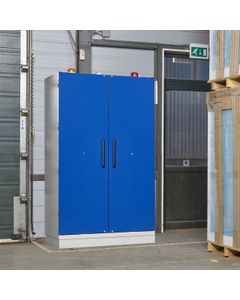
Armarios de seguridad para baterías de litio con homologación EN - 90 minutos 226-LT Justrite
ES Armarios de seguridad para un alto nivel de seguridad en el almacenamiento de baterías de iones de litio
Disponible en 3 versiones

Armarios de seguridad para bidones verticales Sure-Grip® Ex 89-VD Justrite Amarillo Sin rodillos
Cumple la normativa OSHA y NFPA. Almacenamiento vertical para uno o dos bidones de 110 a 200 L
Disponible en 1 versiones
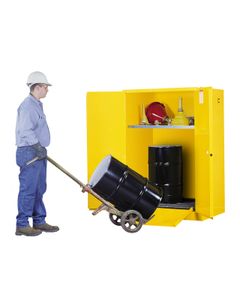
Armarios de seguridad para bidones verticales Sure-Grip® Ex 89-VD Justrite Amarillo Rodillos para tambores
Cumple la normativa OSHA y NFPA. Almacenamiento vertical para uno o dos bidones de 110 a 200 L
Disponible en 2 versiones
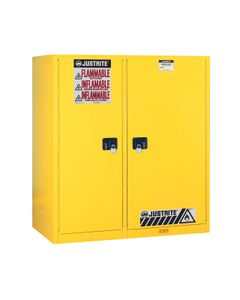
Armarios de seguridad de doble uso para bidones verticales Sure-Grip® EX 89-DD Justrite
Dos compartimentos separados con capacidad para un bidón vertical de 200 o 110 L y hasta 12 latas de seguridad de 19 L
Disponible en 2 versiones

Armarios de seguridad Piggyback Sure-Grip® EX 89-PG Justrite armario de seguridad para líquidos inflamables Amarillo
Diseño de poca altura que le permite almacenar productos inflamables en las mesas de trabajo o encima de armarios de 114 o 170 L
Disponible en 4 versiones
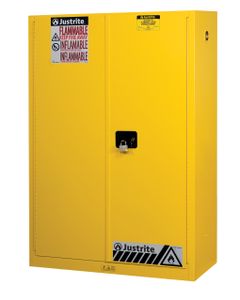
Armarios de seguridad Classic Sure-Grip® EX 89-CL Justrite armario para inflamables Amarillo Manual
Proteja a sus trabajadores, reduzca los riesgos de incendio, y mejore su productividad almacenando combustibles y productos químicos inflamables en armarios de seguridad que cumplen con la OSHA y la NFPA.
Disponible en 5 versiones

Armarios de seguridad Classic Sure-Grip® EX 89-CL Justrite armario para inflamables Rojo Manual
Proteja a sus trabajadores, reduzca los riesgos de incendio, y mejore su productividad almacenando combustibles y productos químicos inflamables en armarios de seguridad que cumplen con la OSHA y la NFPA.
Disponible en 1 versiones

Armarios de seguridad Classic Sure-Grip® EX 89-CL Justrite armario para inflamables Blanco Manual
Proteja a sus trabajadores, reduzca los riesgos de incendio, y mejore su productividad almacenando combustibles y productos químicos inflamables en armarios de seguridad que cumplen con la OSHA y la NFPA.
Disponible en 1 versiones
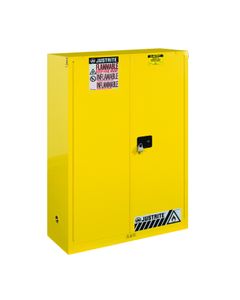
Armarios de seguridad Classic Sure-Grip® EX 89-CL Justrite armario para inflamables Amarillo Autocierre
Proteja a sus trabajadores, reduzca los riesgos de incendio, y mejore su productividad almacenando combustibles y productos químicos inflamables en armarios de seguridad que cumplen con la OSHA y la NFPA.
Disponible en 4 versiones
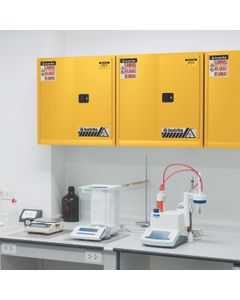
Armarios de seguridad Wall-Mount Sure-Grip® EX 89-WM Justrite armario de seguridad para líquidos inflamables Amarillo
Saca el máximo partido a tu espacio útil de almacenamiento: cuelgue el armario sobre la mesa de trabajo para un fácil acceso a los disolventes
Disponible en 2 versiones
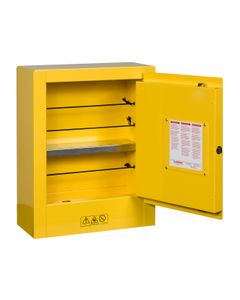
Mini armarios de seguridad 89-MI Justrite armario de seguridad para líquidos inflamables Amarillo
Armario que ocupa poco espacio. Guarda materiales inflamables de forma segura al alcance de la mano. Es fácil de mover
Disponible en 1 versiones
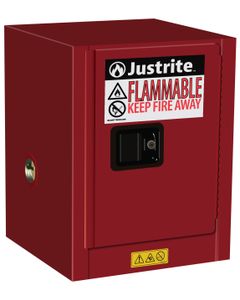
Armarios de seguridad sobre mesa Sure-Grip® EX 89-CT Justrite armario de seguridad para líquidos inflamables Rojo
Utilícelo en mesas de trabajo para acceder a los líquidos usados con más frecuencia. Con diseño compacto conforme a la normativa, ofrece la misma protección frente a incendios que los armarios Justrite más grandes
Disponible en 1 versiones
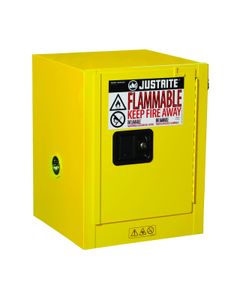
Armarios de seguridad sobre mesa Sure-Grip® EX 89-CT Justrite armario de seguridad para líquidos inflamables Amarillo
Utilícelo en mesas de trabajo para acceder a los líquidos usados con más frecuencia. Con diseño compacto conforme a la normativa, ofrece la misma protección frente a incendios que los armarios Justrite más grandes
Disponible en 2 versiones
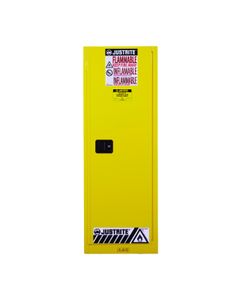
Armarios de seguridad Slimline Sure-Grip® EX 89-SL Justrite armario de seguridad para líquidos inflamables Amarillo
Almacene de forma segura los productos inflamables cuando no tenga mucho espacio o úselo para ampliar el almacenaje de los armarios que ya tenga
Disponible en 3 versiones
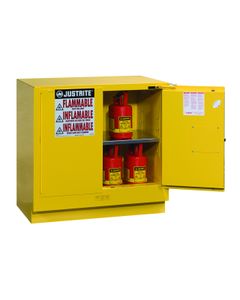
Armarios de seguridad bajo mesa de trabajo Sure-Grip® EX 89-UC Justrite armario de seguridad para líquidos inflamables Amarillo
Colóquelo debajo de la superfice de trabajo para aprovechar el espacio de almacenaje y guardar los líquidos cerca
Disponible en 2 versiones
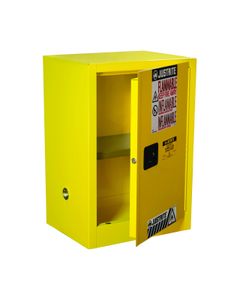
Armarios de seguridad Compac Sure-Grip® EX 89-CM Justrite armario de seguridad para líquidos inflamables Amarillo
Diseño resistente al fuego que incluye pared doble de hierro con una capa de aislamiento de aire de 38 mm con 3 posiciones de cierre con barras de acero inoxidable para un cierre de puertas positivo y a prueba de fallos
Disponible en 4 versiones
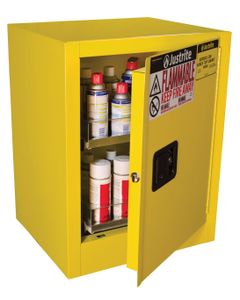
89-AB Justrite Amarillo
Fits up to 24 cans in two steel roll-out shelves with easy glide plastic rollers and top guard protection.
Disponible en 1 versiones
FAQ about Armarios de seguridad para inflamables
Can I store gasoline and oil in the same cabinet?
Can I store containers in the sump of a safety cabinet?
What types of chemicals should be stored in these cabinets?
Does my safety cabinet need to be grounded?
Do I need self-closing cabinet?
Will my modification void the FM Approval and Justrite warranty to a safety cabinet or safety can?
Can I leave my containers in boxes and store them in a safety cabinet?
Are safety cabinets required to have their bung plugs installed?






